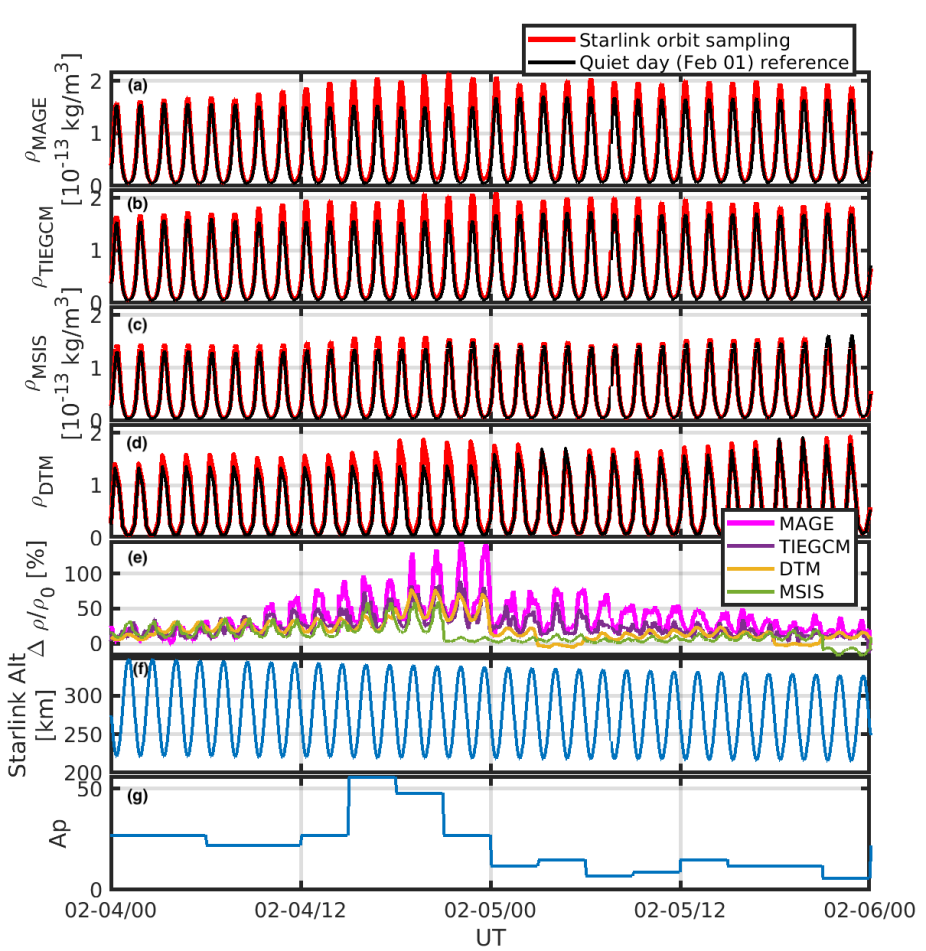Space Weather—Dong Lin, Wenbin Wang, Katherine Garcia-Sage, Jia Yue, Viacheslav Merkin, Joseph McInerney, Kevin Pham, Kareem Sorathia

Neutral density variations along the Starlink orbit calculated by (a) MAGE, (b) TIEGCM, (c) DTM-2012, and (d) NRLMSIS 2.0. (e) Relative variations of neutral density based on the values on February 1 at the same UT and location. (f) Starlink altitude. (g) The Ap index used to drive NRLMSIS 2.0.
On February 3, 2022, 40 Starlink satellites were launched by the SpaceX Corporation when a moderate geomagnetic storm occurred, followed by another storm on February 4. The storm activities have been regarded as the culprit for the loss of the Starlink satellites afterwards. Although strong geomagnetic storms are well-known to be able to increase the neutral atmospheric mass density so as to satellite drag in the thermosphere where many space vehicles are orbiting around the Earth, a not-so-strong storm was not expected to bring such huge impacts based on engineering design evaluation using empirical atmospheric density models. This study compares the performance of a state-of-the-art physics-based, fully coupled whole geospace model and empirical models in predicting the neutral mass density variation in the thermosphere. It turns out that the physics-based model is more accurate in capturing the magnitude of storm enhancement of neutral density. It also resolves the gradual recovery process even though it is not reflected in some geomagnetic indices that are used to drive the empirical models. Using such first-principles whole geospace model is suggested as a necessary step in future space weather applications.